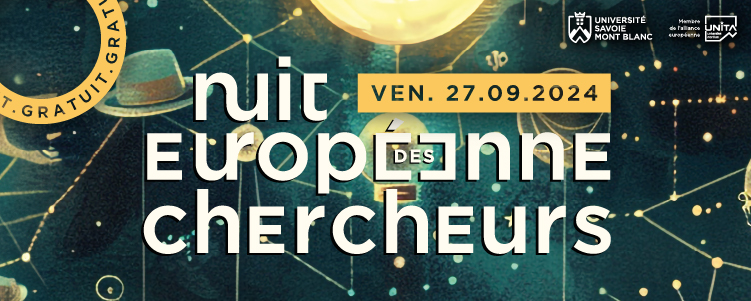Le 27 septembre, venez rencontrer des chercheures et chercheurs à l’espace La Clé à Faverges-Seythenex !
Loin du cadre institutionnel de l’université et de ses laboratoires de recherche, venez à la rencontre des chercheuses et des chercheurs au sein de la communauté de communes des sources du lac d’Annecy, à Faverges-Seythenex ! C’est une occasion privilégiée pour échanger avec des scientifiques de toutes disciplines, sur le thème : « Comment décarboner le bâtiment ? ». Un stand interactif ainsi qu’une conférence passionnante vous attendent à cette occasion !
Au programme
De 18h à 20h – Stand interactif : « Ma valise de chercheur : quels systèmes pour assurer une bonne ambiance ? »
Par Florine Giraud, enseignante-chercheuse au laboratoire LOCIE
« Je rentre de voyage et vous dévoile le contenu de mes bagages : du papier, de l’eau, des billes, des vannes, des tuyaux… Saurez-vous définir les objets essentiels à ma recherche et deviner leur utilité ? »
Ingénieure puis docteure INSA de Lyon, Florine Giraud a commencé sa carrière en tant qu’enseignante-chercheure au Conservatoire National des Arts et Métiers à Paris. Elle est actuellement maîtresse de conférences en énergie au Laboratoire procédés énergie bâtiment (LOCIE). Ses travaux de recherche sont principalement axés sur la décarbonation des systèmes énergétiques.
À partir de 19h – Conférence : « Transition vers des constructions bas carbone »
Par Christophe Ménézo, enseignant-chercheur au laboratoire LOCIE
La décarbonation du secteur du bâtiment est cruciale pour lutter contre le changement climatique, car ce secteur est responsable d’une grande partie des émissions de CO₂ et ont donc intrinsèquement un contenu carbone important. Le béton et l’acier, matériaux couramment utilisés, sont particulièrement énergivores à produire et fortement émetteurs de gaz à effet de serre. Dans un contexte des efforts fait par ailleurs sur l’efficacité énergétique des bâtiments, le « poids carbone » de la structure des constructions n’est que plus important. Pour réduire ces émissions, il est nécessaire d’adopter des matériaux alternatifs comme le bois, les briques de terre crue, et les composites biosourcés. Ces matériaux ont une empreinte carbone beaucoup plus faible. En outre, ils offrent souvent des avantages en termes d’isolation thermique et d’efficacité énergétique, contribuant ainsi à un cycle de vie du bâtiment plus durable et respectueux de l’environnement.
Christophe Ménézo est enseignant-chercheur et directeur du Laboratoire procédés énergie bâtiment (LOCIE) à l’USMB. Ses recherches axées, à l’origine, sur la physique du bâtiment se sont orientées très tôt dans le domaine de l’énergie solaire. Il est directeur adjoint de l’EUR Solar Academy Graduate School (USMB/CNRS/CEA) ainsi que de la chaire transfrontalière CITEE sur l’efficacité énergétique (USMB/HES Hepia/Université de Genève).
En savoir plus :
- Contact : Mission Culture Scientifique et Technique et Industrielle de l’USMB
- Téléchargez le programme en pdf
- Découvrez les deux autres lieux investis par l’université Savoie Mont Blanc pour cette Nuit Européenne des Chercheurs à Bourg Saint Maurice, et Chambéry.
